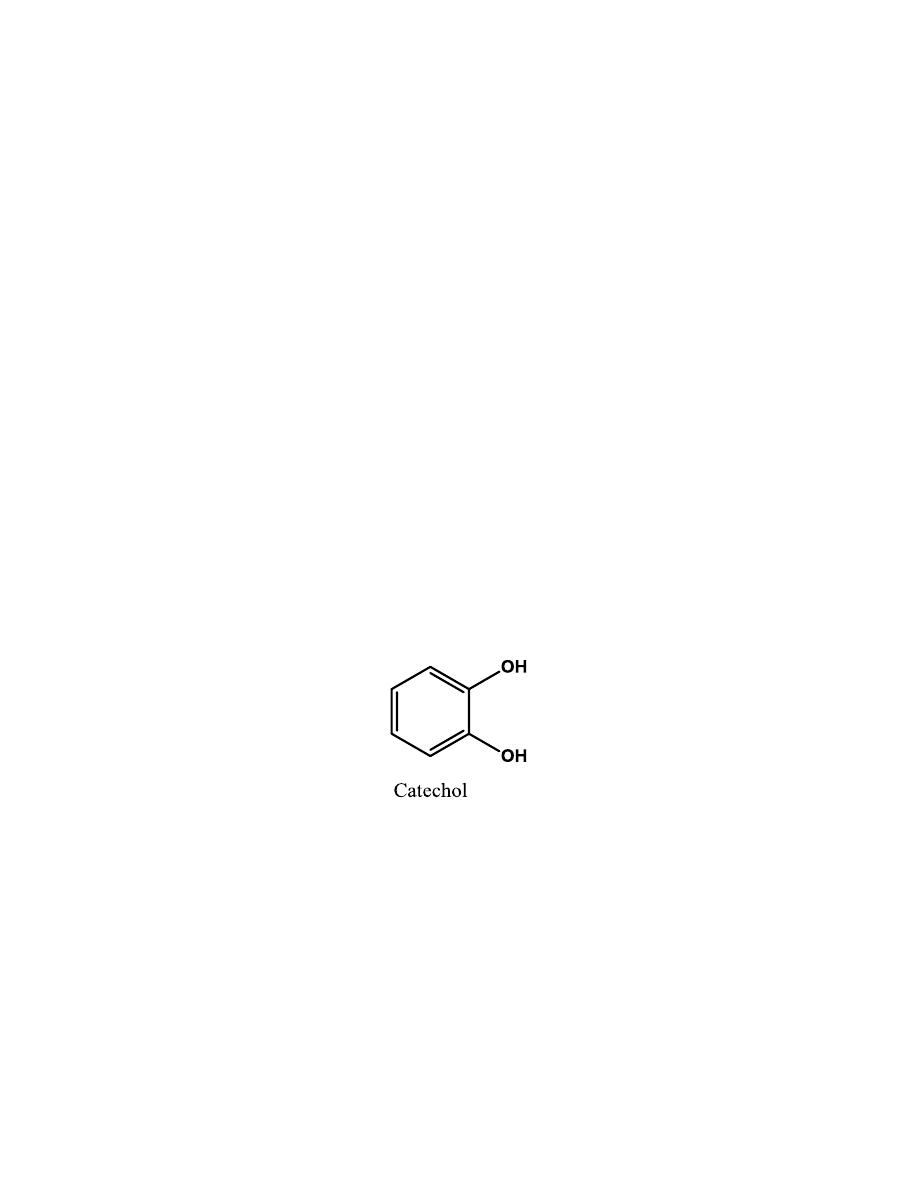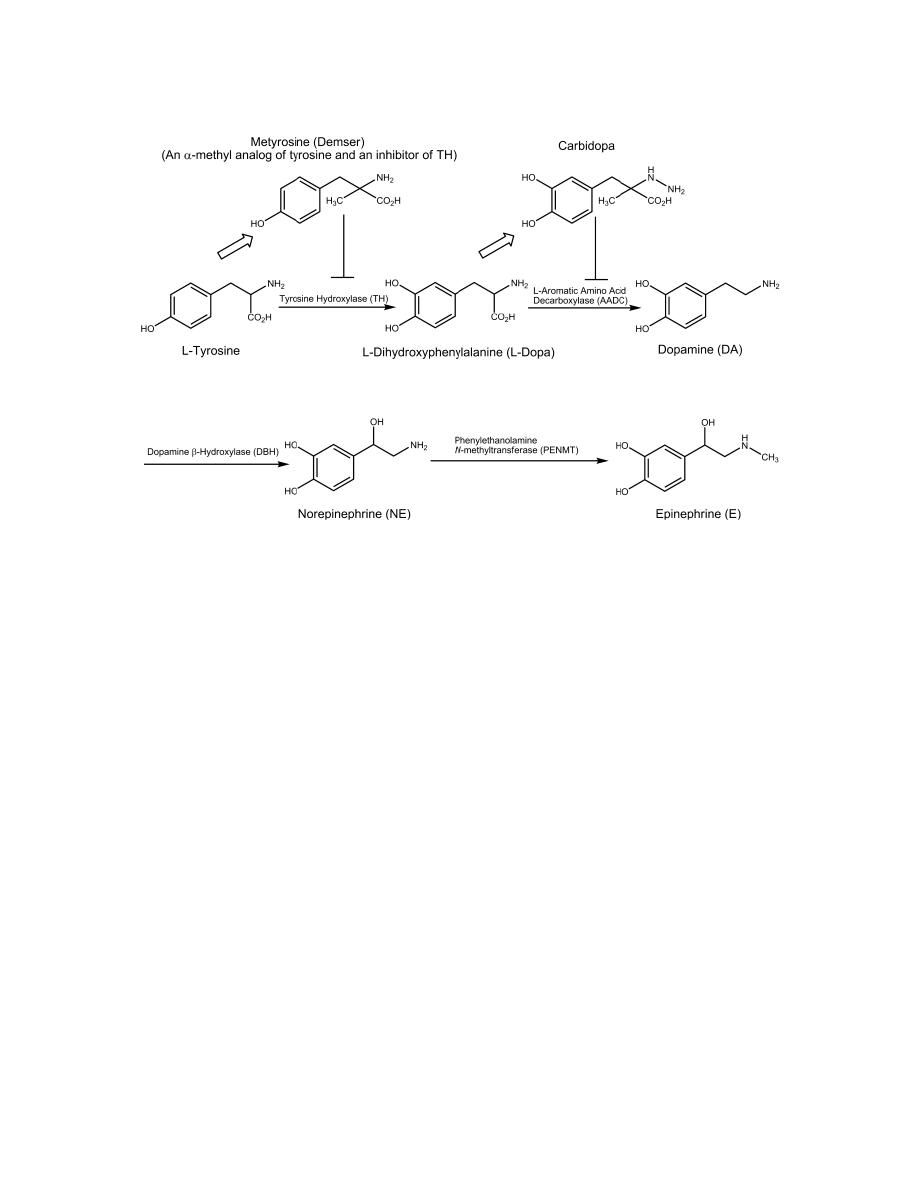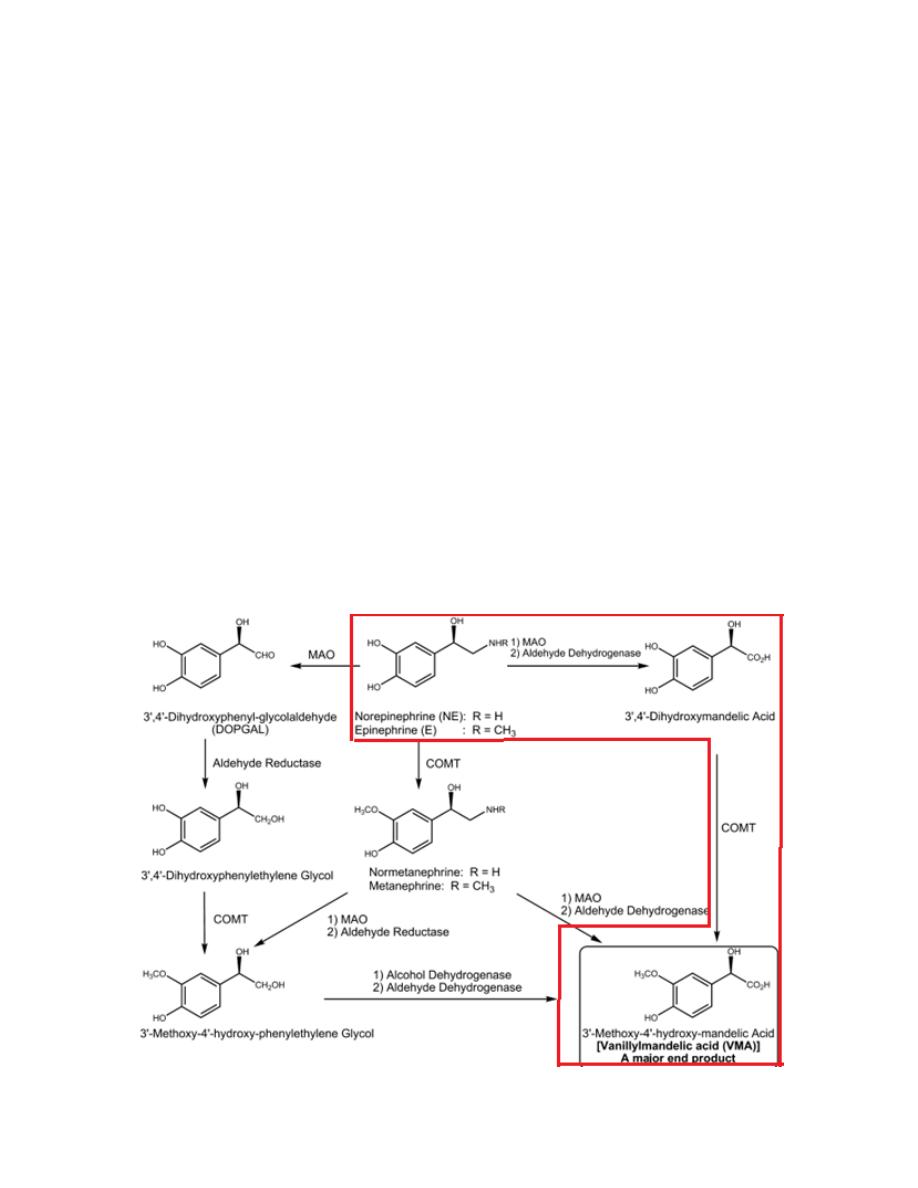
1
Adrenergic Agents
Adrenergic drugs exert their principal pharmacological and therapeutic
effects by either enhancing or reducing the activity o of the sympathetic
division of the autonomic nervous system.
Sympathomimetics:
Sympatholytics:
Adrenergic agents act on adrenergic receptors (adrenoceptors, ARs) or
affect the life cycle of adrenergic neurotransmitters (NTs).
The adrenergic NTs includes norepinephrine (NE, noradrenaline),
epinephrine (E, adrenaline), and dopamine (DA). These NTs modulate many
vital functions, such as the rate and force of cardiac contraction, constriction,
and dilation of blood vessels and bronchioles, the release of insulin, and the
breakdown of fat.
NE, E, and DA are chemically catecholamines (CAs), which refer generally
to all organic compounds that contain a catechol nucleus (ortho-
dihydroxybenzene) and an ethylamine group.
Biosynthesis
CAs are continuously being synthesized, released, and metabolized to
maintain a constant level in tissues.
1- The first step in CA biosynthesis is the 3´-hydroxylation of the amino
acid L-tyrosine to form L-dihydroxyphenylalanine (L-DOPA). This
step is catalyzed by tyrosine hydroxylase (TH).

2
TH hydroxylation is the rate-limiting step in the biosynthesis of NE.
2- The second step in CA biosynthesis is the decarboxylation of L-
DOPA to give DA, which is an important NT. The enzyme involved is
DOPA decarboxylase.
This enzyme is more appropriately referred to as L-aromatic amino acid
decarboxylase (AADC).
In simplest term, parkinsonism can be characterized as a DA deficiency in
the brain. Thus, increasing brain levels of DA should impeove the
symptoms. Unfortunately, direct parenteral DA administration is useless
because the compound does not penetrate the blood-brain barrier (BBB).
However, oral dosing with L-DOPA (levodopa) could act as a prodrug
because it entered the brain (on a specific carrier) and then was
decarboxylated to DA there. LDOPA is effective and decrease tremor and
rigidity. Unfortunately, many adverse systemic effects were the result of the
high doses needed to achieve the desired results. The main reason is the
relatively higher concentration of AADC in peripheral system than in the
brain. Inhibition of peripheral AADC activity by coadministration of at
peripheral decarboxylase inhibitor such as carbidopa (charged at
physiological pH), can increase the proportion of levodopa that crosses the
BBB.
3- The third step in CA biosynthesis is side-chain β-hydroxylation of DA
to give NE.
DA formed in the cytoplasm of the neuron is actively transported into
storage vesicles by vesicular monoamine transporter (VMAT) and is then
hydroxylated at the β-carbon to NE inside the vesicle by dopamine β-
hydroxylase (DBH).

3
4- The last step in CA biosynthesis is the N-methylation of NE to give E
in the adrenal medulla. The reaction is catalyzed by the enzyme
phenylethanolamine-N-methyltransferase (PNMT).
ADRENERGIC RECEPTORS
The diverse physiological responses of CAs are mediated via α
1
-, α
2
-, and β
-adrenoceptors, which are further divided into α
1A
, α
1B
, α
1D
, α
2A
, α
2B
, α
2C
,
β
1
, β
2
, and β
3
. They all belong to the superfamily (G-protein)–coupled
receptors, which have seven-transmembrane (7TM) helical regions.
α
1
- Agonists as Vasoconstrictors and Nasal Decongestants
α
1
-Antagonists for Treatment of Hypertension benign prostatic hyperplasia
(BPH)
α
2
-Agonists for Treatment of Hypertension.
β
1
- Blockers for Treatment of Hypertension, Angina, and Certain Cardiac
Arrhythmias.

4
β2-Agonists for Treatment of Asthma and Premature Labor
Storage, Release, Uptake, and Metabolism
Storage and Release.
A large percentage of the NE present is located within highly specialized
subcellular particles in sympathetic nerve endings and chromaffin cells.
The NE formed is stored in the vesicles until depolarization of the neuron
which initiates the process of vesicle fusion with the plasma membrane and
the release of NE into the synaptic cleft by vesicle exocytosis.
Indirectly acting and mixed sympathomimetics (e.g., amphetamines,
pseudoephedrine, and ephedrine) are capable of releasing stored transmitter
from noradrenergic nerve endings by a calcium-independent process.
They are taken up into nerve endings by NE reuptake transporter (NET)
responsible for NE reuptake into the nerve terminal. In the nerve ending,
they are then transported by VMAT into the vesicles, displacing NE, which
is subsequently expelled into the synaptic space by reverse transport via NE
reuptake transporter (NET). Their action does not require vesicle exocytosis.
Uptake
The mechanisms for removing the NE from the synapse and terminating its
action at the receptors include:
(a) Reuptake of NE into the presynaptic neuron (recycling, major
mechanism) by NE reuptake transporter (NET) and into extraneuronal
tissues.
(b) Conversion of NE to an inactive metabolite.
(c) Diffusion of the NE away from the synapse.
The most important of these mechanisms is recycling the NE. This process is
termed uptake-1 and involves a Na
+
/Cl
-
-dependent
transmembrane NE
reuptake transporter that has a high affinity for NE.

5
In addition to the neuronal uptake of NE, there exists an extraneuronal
uptake process, called uptake-2with relatively low affinity for NE.
Metabolism
The major mammalian enzymes of importance in the CA metabolism are
monoamine oxidase (MAO) and catechol-O-methyltransferase (COMT).
Drugs that are catechols are subject to metabolism by COMT, whereas drugs
with unsubstituted or secondary N-methyl-amino amino groups are often
substrates for MAO.
The first enzyme of importance in the metabolism of CAs is MAO. MAOs
oxidatively deaminate CAs to their corresponding aldehydes, which are
rapidly oxidized to the corresponding acid by the enzyme aldehyde
dehydrogenase
The second enzyme of importance in the metabolism of CAs is COMT that
O-methylates 3´-OH group of CAs and renders them inactive.
Methylation
by COMT occurs almost exclusively on the meta-OH group of the catechol.

6
DRUGS AFFECTING ADRENERGIC NEUROTRANSMISSION
Drugs Affecting Catecholamine Biosynthesis
Metyrosine (α-Methyl-L-tyrosine,)
Although inhibition of any of the three enzymes involved in CA
biosynthesis should decrease CAs, inhibitors of the first and the rate-limiting
enzyme TH would be the most effective. It is used principally for the
preoperative management of pheochromocytoma, chromaffin cell tumors
that produce large amounts of NE and E.
Drugs Affecting Catecholamine Storage and Release
Reserpine (an NT Depleter)
Reserpine binds extremely tightly with and blocks VMAT that transports NE
and other biogenic amines from the cytoplasm into the storage vesicles.Thus
in sympathetic neurons, NE, which normally is transported into the storage
vesicles, is instead metabolized by mitochondrial MAO in the cytoplasm.
